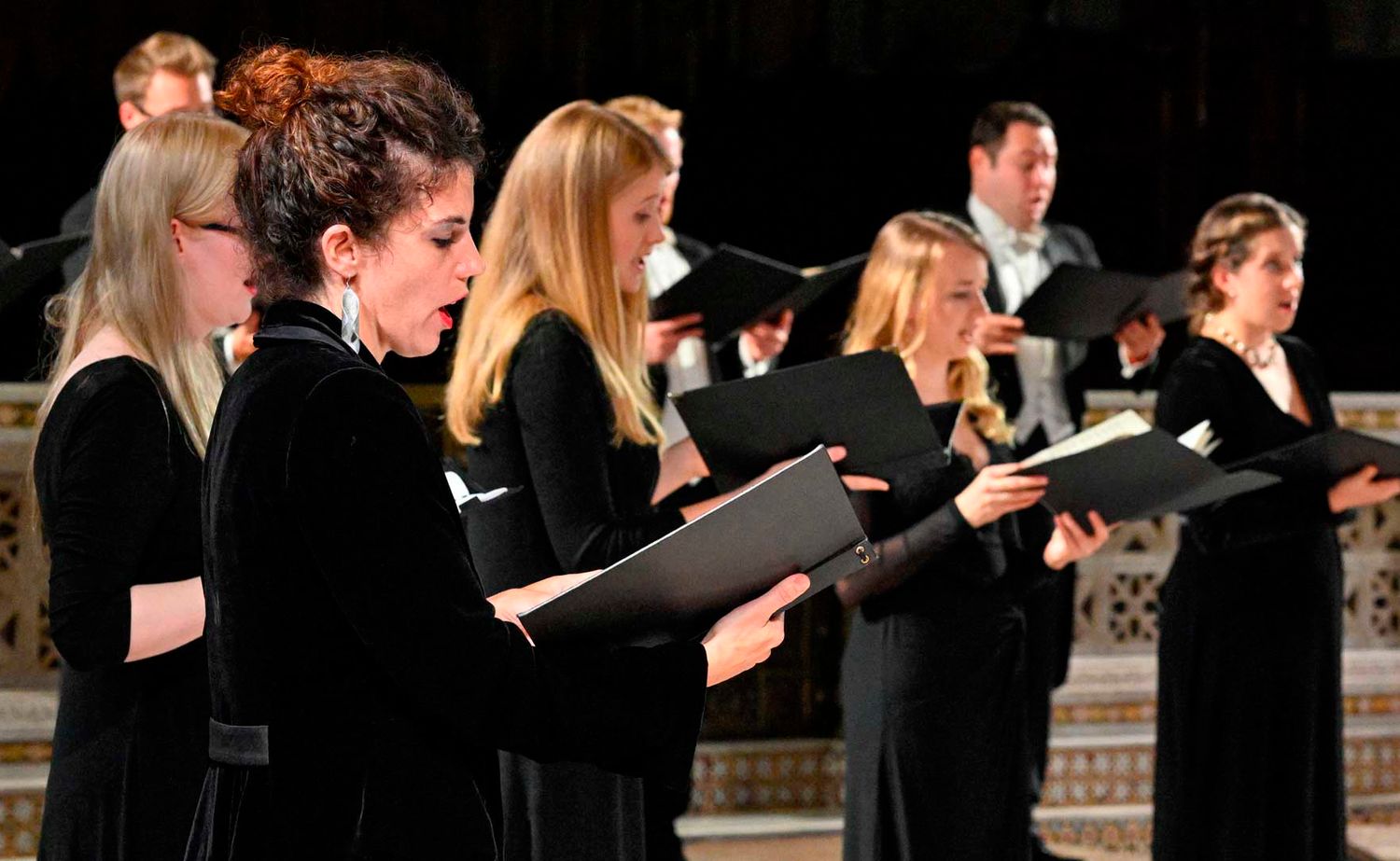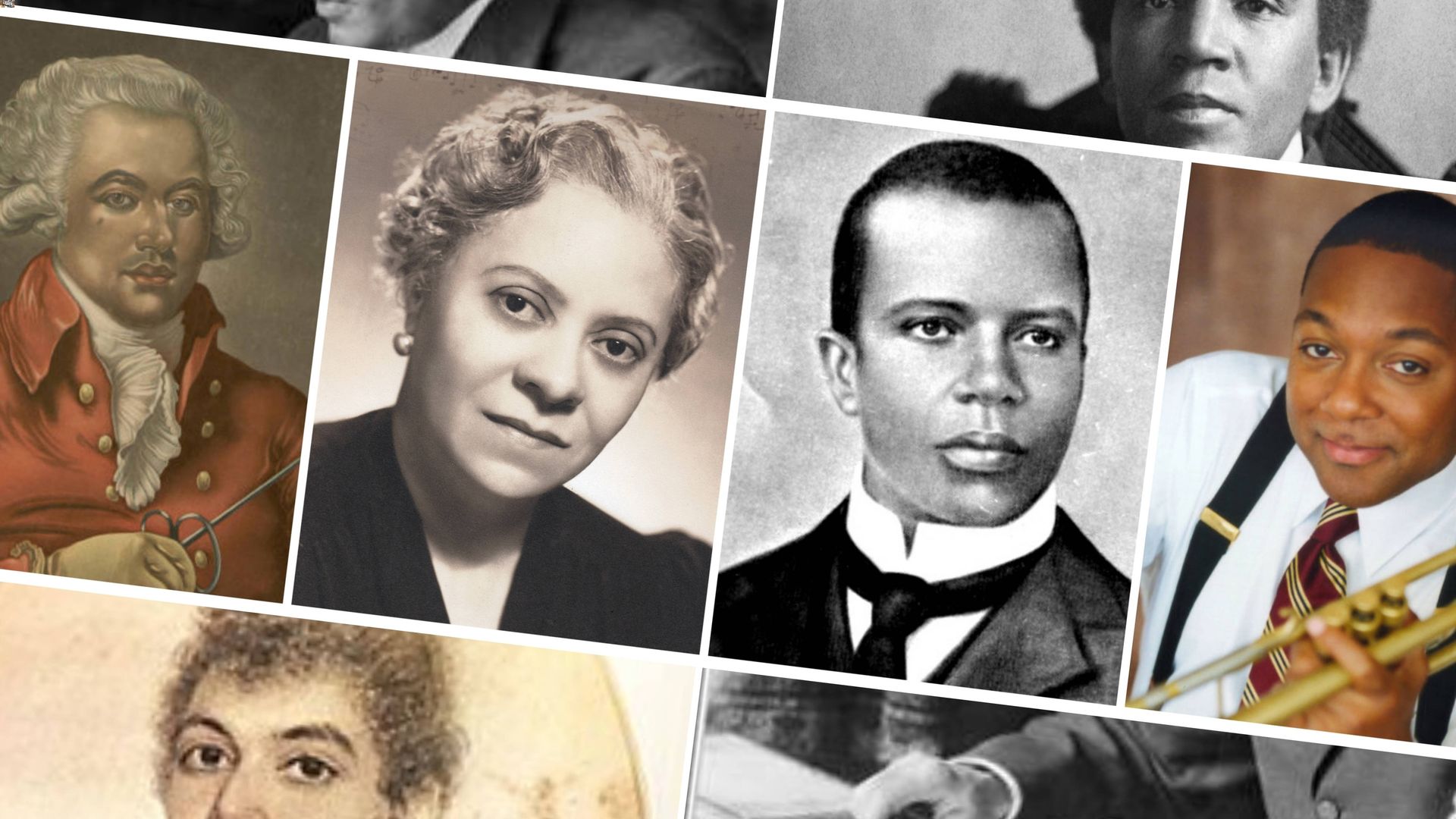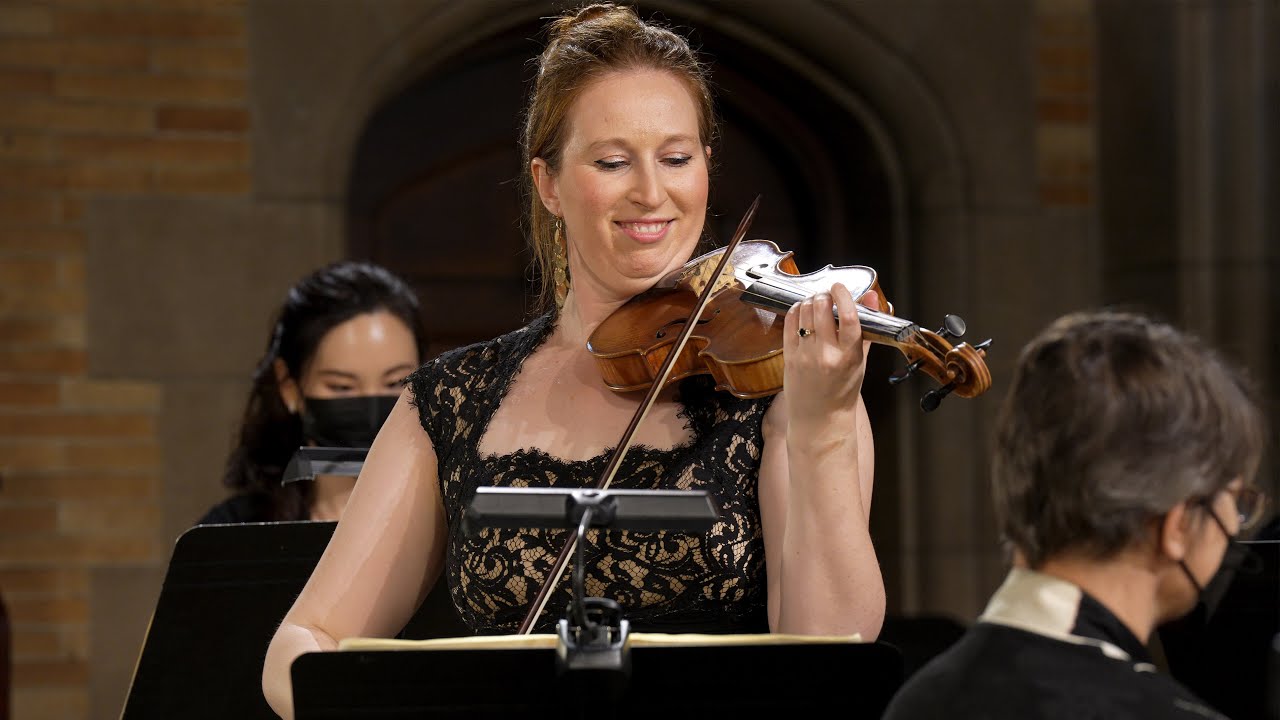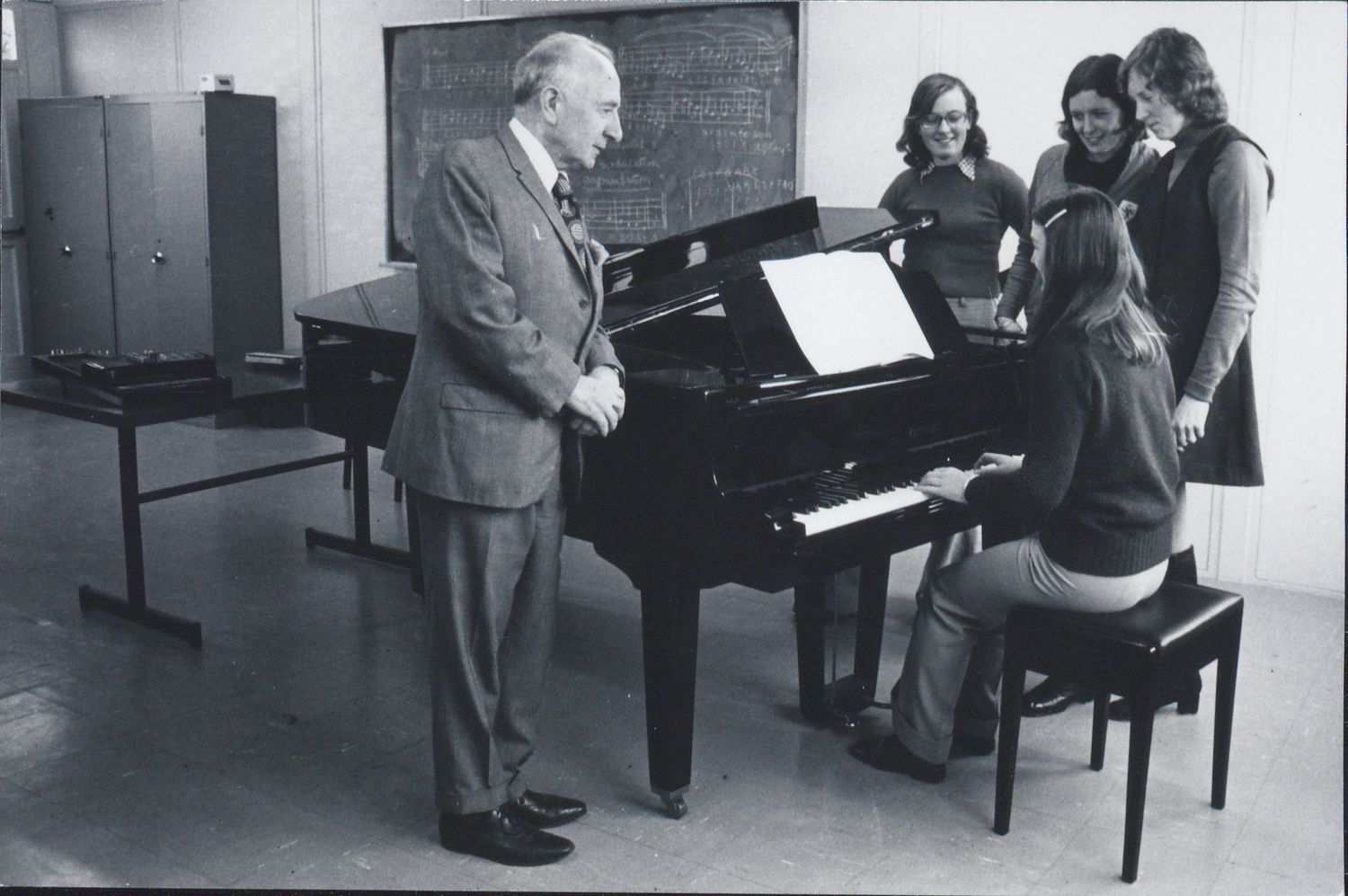Home>Events & Info>Music History>Why Coplands Third Symphony Significant In Music History
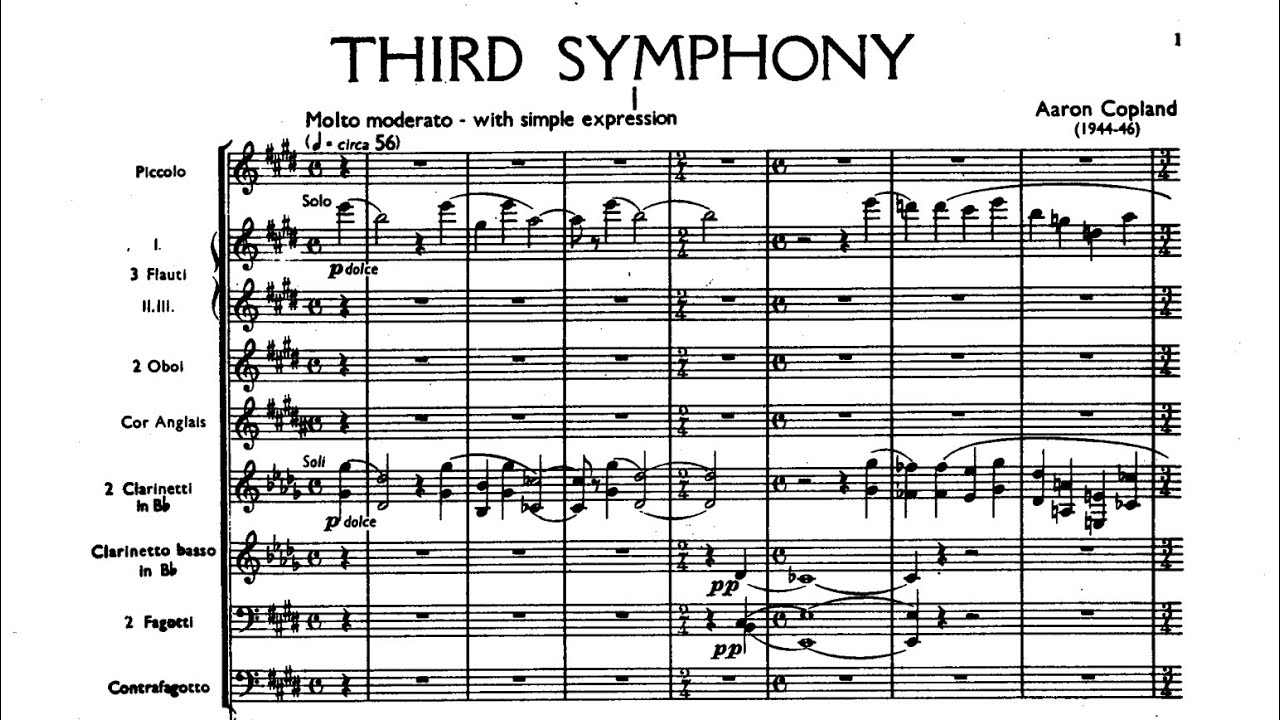

Music History
Why Coplands Third Symphony Significant In Music History
Modified: January 22, 2024
Explore the significance of Copland's Third Symphony in music history, tracing its influence on the evolution of the genre and its lasting impact. Discover how this masterpiece shaped the course of music history.
(Many of the links in this article redirect to a specific reviewed product. Your purchase of these products through affiliate links helps to generate commission for AudioLover.com, at no extra cost. Learn more)
Table of Contents
Introduction
Music history is filled with groundbreaking compositions that have left an indelible mark on the world of music. One such remarkable piece is Aaron Copland’s Symphony No. 3. This symphony holds significant importance in the realm of music history, showcasing Copland’s mastery of composition and his ability to evoke emotive landscapes through sound.
Aaron Copland, an American composer, is widely regarded as one of the most influential figures in twentieth-century music. His ability to blend classical and modern elements while capturing the spirit of America made him a unique and celebrated composer. Copland’s Symphony No. 3, composed between 1944 and 1946, is a masterpiece that embodies the essence of his musical style and artistic vision.
Symphony No. 3 is a monumental composition, consisting of four movements that take the listener on a captivating musical journey. Copland drew inspiration from various sources, including the turmoil of World War II and the resilience of the American people. The symphony reflects both the turbulence and optimism of the era, making it a compelling testament to the human spirit in the face of adversity.
Throughout this article, we will delve into the background of Aaron Copland, provide an overview of Symphony No. 3, explore its historical context, discuss its musical significance, and examine its lasting influence and legacy. By delving into the intricacies of this symphony, we can gain a deeper appreciation for its contributions to the rich tapestry of music history.
Background of Aaron Copland
Aaron Copland was born on November 14, 1900, in Brooklyn, New York. He displayed an early passion for music and began his formal musical training at a young age. Copland studied piano and composition in New York City and traveled to France to study with renowned composer Nadia Boulanger, who had a profound influence on his musical development.
Copland’s musical style was shaped by his exposure to European classical music, but he was also deeply influenced by the sounds of American folk music and jazz. He sought to create a unique and distinctly American sound in his compositions, often drawing inspiration from the vast landscapes and cultural diversity of the United States.
As an accomplished composer, Copland garnered critical acclaim for his ability to effectively capture the spirit of America through his music. He embraced a style that was both accessible to a wide audience and intellectually stimulating, earning him a reputation as one of the leading voices in American classical music.
In addition to his compositions, Copland was a respected music educator and writer. He held teaching positions at prominent institutions such as the New School for Social Research and Tanglewood Music Center, where he mentored aspiring musicians and composers.
Throughout his career, Copland received numerous awards and honors, including the Pulitzer Prize for Music in 1945 for his ballet score “Appalachian Spring.” He continued to compose and contribute to the music world until his passing in 1990, leaving behind a rich and enduring musical legacy.
Overview of Symphony No. 3
Symphony No. 3 is considered one of Aaron Copland’s most iconic and influential compositions. It encompasses a wide range of emotions and musical landscapes, showcasing Copland’s ability to blend traditional orchestral elements with distinctly American musical idioms.
The symphony is structured into four movements, each with its own distinct character and musical motifs. The first movement, marked “Molto moderato,” opens with a solemn and contemplative theme that gradually builds in intensity. It explores themes of introspection and longing, capturing the somber mood of the world during World War II.
The second movement, “Allegro molto,” is a lively and rhythmic scherzo that injects a sense of energy and vitality into the symphony. It features syncopated rhythms, jazzy elements, and a playful melody, creating a contrasting and vibrant musical experience.
The third movement, “Andantino quasi allegretto,” takes a more subdued and introspective turn. It begins with a lyrical and expressive melody, showcasing Copland’s gift for writing poignant and memorable melodies. The movement gradually builds in intensity, leading to a powerful climax before concluding in a serene and reflective manner.
The final movement, marked “Molto deliberato – Allegro risoluto,” is the culmination of the symphony. It opens with a dark and brooding theme that gradually transforms into a triumphant and uplifting melody. This movement showcases Copland’s ability to convey a sense of resilience and hope in the face of adversity.
Symphony No. 3 is known for its distinctive use of brass and percussion, which gives the music a grand and majestic quality. It also incorporates folk music elements, including the iconic “Fanfare for the Common Man,” which has become one of Copland’s most recognizable compositions.
As a whole, Symphony No. 3 represents Copland’s attempt to capture the essence of America and the spirit of its people. It combines elements of American folk music, jazz, and classical tradition to create a composition that is both deeply emotional and authentically American.
Historical Context of Symphony No. 3
Symphony No. 3 was composed by Aaron Copland during a pivotal period in history. The symphony reflects the tumultuous events of the mid-1940s, particularly the impact of World War II on global society and the resilience of the American people.
During World War II, the world was engulfed in conflict and uncertainty. The war had a profound effect on people’s lives, shaping their experiences and emotions. Copland, like many artists of his time, felt the weight of these turbulent times and sought to express these sentiments through his music.
Copland’s Symphony No. 3 captures the spirit and emotions of the era, encapsulating both the hardships and hopes of the American people. The symphony serves as a musical reflection of the collective experiences and struggles faced by individuals during this period of history.
Moreover, the composition of Symphony No. 3 coincided with a significant shift in Copland’s compositional style. Prior to the symphony, Copland was known for his more abstract and dissonant works. However, during the composition of Symphony No. 3, he embraced a more accessible musical language that aimed to connect with a broader audience.
By adopting a more tonal and melodic approach, Copland intended to evoke both a sense of familiarity and emotional resonance in his listeners. This shift in style was not only a response to the historical context but also an intentional move to make his music more relatable and impactful.
Symphony No. 3 premiered in October 1946 with the Boston Symphony Orchestra, conducted by Serge Koussevitzky. The timing of the premiere was significant, as it marked the period of post-war reconstruction and a renewed sense of optimism worldwide.
The symphony received widespread acclaim, with critics praising its evocative melodies, powerful orchestration, and profound emotional depth. It quickly became a staple in the orchestral repertoire and solidified Copland’s reputation as one of America’s greatest composers.
By placing Symphony No. 3 within its historical context, we can appreciate the profound impact it had on listeners at the time and the ways in which it captured the spirit of the era. Copland’s masterful composition serves as both a reflection of history and a timeless musical testament to human resilience and hope.
Musical Significance of Symphony No. 3
Symphony No. 3 holds immense musical significance and has made a lasting impact in the world of classical music. Aaron Copland’s composition skillfully blends various musical elements to create a work that is both powerful and deeply moving.
One of the significant aspects of Symphony No. 3 is Copland’s ability to infuse the music with a distinctly American sound. He achieved this by incorporating folk music elements and jazz-inspired rhythms, reflecting the rich tapestry of American musical heritage. The symphony’s melodies are memorable, emotional, and often evoke a sense of national pride.
Furthermore, Symphony No. 3 served as a turning point in Copland’s career. It marked a departure from his earlier more dissonant and experimental compositions, as he embraced a more accessible and tonal style. This shift allowed a wider audience to connect with his music, expanding the appreciation for contemporary classical music in America.
Another notable aspect of Symphony No. 3 is its orchestration. Copland expertly utilizes the full range of the orchestral palette, including lush string sections, powerful brass passages, and vibrant percussion. The interplay between these sections creates a rich and dynamic texture that adds to the symphony’s emotional impact.
The symphony also showcases Copland’s skill in creating dramatic contrasts and building tension. He seamlessly transitions between gentle, introspective moments and grand, powerful climaxes. This ability to create a sense of musical tension and release keeps the listener engaged throughout the symphony.
One of the most recognizable sections of Symphony No. 3 is the iconic “Fanfare for the Common Man,” which has become one of Copland’s most celebrated compositions. This fanfare, with its bold brass and percussion, represents a symbol of strength, unity, and the indomitable spirit of the American people.
Overall, Symphony No. 3 remains a significant work in the classical music canon. Its combination of accessible melodies, distinct American musical elements, and expert orchestration has solidified its place as a cornerstone of American classical music. The symphony continues to be performed and celebrated for its emotional depth, musical craftsmanship, and its ability to evoke a sense of national identity.
Influence and Legacy of Symphony No. 3
Symphony No. 3 by Aaron Copland has had a significant influence on the world of classical music and has left a lasting legacy that continues to resonate today. The symphony’s impact extends beyond its initial composition and premiere, shaping the works of subsequent composers and contributing to the broader cultural landscape.
Symphony No. 3 served as a pioneering work in the development of an American musical identity. Copland’s fusion of classical and American folk influences set a precedent for future composers seeking to create music that captured the spirit and essence of the nation. This blending of musical styles and incorporation of American themes became known as the “American sound,” which has become a defining characteristic of American classical music.
Copland’s use of accessible melodies and his ability to effectively connect with audiences through his composition style had a profound impact on the accessibility and popularity of contemporary classical music. Symphony No. 3 demonstrated that modern classical music could be both intellectually stimulating and emotionally engaging, attracting a broader audience to the genre.
The symphony’s impact on the cultural landscape went beyond the concert hall. It found its way into popular culture, with its recognizable themes and motifs being featured in films, television shows, and advertisements. This exposure introduced Symphony No. 3 to a wider audience, further cementing its place as an iconic piece of music.
Furthermore, Symphony No. 3 inspired subsequent generations of composers to explore and expand upon Copland’s musical language and thematic elements. Many composers, both within the United States and abroad, drew inspiration from Copland’s fusion of traditional classical music and American folk influences, contributing to the development of new musical styles and genres.
The impact of Symphony No. 3 extended beyond the realm of classical music as well. Its powerful and uplifting themes resonated with a post-war society seeking hope and optimism. The symphony became a symbol of resilience and triumph in the face of adversity, embodying the spirit of the American people.
Today, Symphony No. 3 remains a popular and frequently performed work in concert halls around the world. Its melodies and motifs continue to captivate audiences and leave a lasting impression. The symphony’s enduring legacy lies in its ability to evoke a sense of national pride and evoke profound emotional responses, solidifying its place as a cornerstone of American classical music.
Conclusion
Aaron Copland’s Symphony No. 3 stands as a testament to the enduring power of music to capture the spirit of a nation and evoke profound emotions. Through its fusion of American folk influences, accessible melodies, and masterful orchestration, the symphony has made a significant impact on music history.
The composition of Symphony No. 3 during the turbulent times of World War II not only reflects the historical context it emerged from but also speaks to the resilience of the human spirit. Copland’s ability to convey a range of emotions, from contemplation to exuberance, resonated with audiences then and continues to do so today.
One of the symphony’s enduring legacies is its contribution to the development of an American musical identity. Copland’s incorporation of American folk elements and his creation of an accessible musical language served as a milestone in the establishment of the “American sound” in classical music.
Symphony No. 3’s influence extended beyond the musical realm, inspiring subsequent composers and becoming a cultural touchstone. Its recognizable themes, such as the iconic “Fanfare for the Common Man,” have woven their way into popular culture, further solidifying the symphony’s place in the collective consciousness.
As it continues to be performed and celebrated in concert halls worldwide, Symphony No. 3 serves as a reminder of the power of music to transcend time and connect with audiences across generations. Its blend of beauty, emotion, and national pride has ensured its lasting impact on the classical music canon.
In conclusion, Aaron Copland’s Symphony No. 3 remains an enduring masterpiece that exemplifies the best of American classical music. Its ability to capture the essence of the era in which it was composed, its musical significance, and its lasting influence have solidified its place as a cherished work in the annals of music history.


